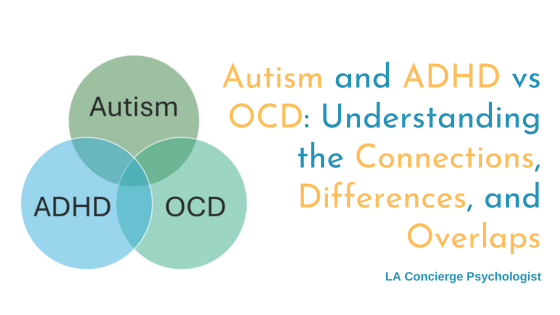This blog post, which explains how to avoid and manage autistic burnout, is the second installment in a two-part series on autistic burnout in adults. Read Part 1—Autistic Burnout: What It Is & How Long It Lasts—for introductory information.
As discussed in Part 1, autistic burnout can occur when there is a chronic imbalance between an autistic person’s internal resources and the demands/expectations they are under. Sadly, professors and employers seldom accommodate autistic people’s needs, so autistic burnout is widespread in adults. If you want to minimize the impact of autistic burnout on your life, this post is for you.
How to avoid—and recover from—autistic burnout
Autistic burnout makes it extremely difficult to function. In this article, we’ll show you how to avoid autistic burnout by balancing your responsibilities and internal energy reserves. If you’re already burned out, that’s okay. Whether you are just being proactive or need to know how to overcome autistic burnout right now, there are five things you can do:
1. Build up your energy reserves
You can’t pour from an empty cup. This is true for anyone, but it is a fundamental concept for autistic adults. When you’re feeling depleted, you must make time for self-care activities. Better yet, incorporate self-care into your daily routine, so you never forget.
Focus on areas where you need the most support. If you’re not sure what your needs are, start there. Have you been feeling physically exhausted? Or is it more of an emotional exhaustion? On the other hand, you might be mentally tired out by a demanding school or work schedule. Your therapist can help you identify your trouble spots if you’re not sure.
The next step is to find rejuvenating or energizing activities that meet your needs. For physical burnout, you might focus on sleep hygiene or improving your diet. For some of our clients, eating certain types of foods bring them energy and joy– like crunchy foods. If your emotional reserves are low, consider watching a funny movie or snuggling with a favorite pet. Many of our clients also find that engaging in their favorite stim can help. For example, rubbing their favorite soft blanket while listening to their favorite song on repeat. For cognitive exhaustion, spend an hour or two engaging in your passions that gets you excited and unleashes your creativity. Think about what’s worked for you in the past and keep doing it.
2. Don’t overextend yourself
In our FOMO-filled, social media-driven world, many people take on too much because they feel like they have to. More so, many autistic people feel the need to keep up with their neurotypical peers. Think about your various expectations and responsibilities, including those that you impose on yourself. Then question whether you truly must do them, and if so, how much? Questions like these are essential in learning how to manage your autistic burnout effectively.
Here are a few examples: Do you need to carry a full-time course load in college? Or could you do part-time for a while? Do you really need to cook dinner from scratch every night, or could you stock up on frozen meals? Are you sure you have to attend every single work function, or could you politely decline some of them?
Avoid overburdening yourself socially, especially if you spend a lot of time trying to pass as allistic. Sometimes masking your autistic traits might make sense to protect yourself emotionally, but masking all the time is asking for trouble. Do what you can to minimize masking, perhaps by spending more time with people with whom you can be authentic. You might even have an opportunity to educate friends, professors, and colleagues about autistic behaviors so they’re not misinterpreted.
3. Create a recovery space
Chronic overstimulation is a common cause of autistic burnout, so it can help to set time aside for daily self-soothing. This is particularly important if you are already in burnout mode. If you’re having difficulty functioning, you may need to take some time off from work or take a break from school until you’ve had the chance to recuperate.
To hasten your recovery, spend as much time as you can in an environment you find soothing. It might be a dark room or a curtained-off corner when you can sit in a rocking chair or lie in bed. Many of our clients find being tucked in tightly under a weighted blanket provides further soothing. If your space at home is overstimulating, you might need to find a quiet park or library nearby, or retreat to your car. Adding auditory stimuli can also be very relaxing; use headphones or speakers to listen to instrumental music, ambient nature sounds, guided meditations, or ASMR videos, if any of those things help you.
4. Do things a little at a time
If you withdrew from work or school during your burnout, find out if there’s a way to come back gradually. To overcome lethargy and procrastination, start small with easy goals such as “take a shower today” or “write down upcoming due dates from the class syllabus onto my calendar.” These small steps forward can activate the brain’s reward centers and help you build some momentum
You can also use this “a little at a time” approach for activities that drain you. Perhaps you can’t stomach the thought of spending all night at a work happy hour, but maybe you could drop by for twenty minutes. Let people know in advance that you’ll be ducking out early, so it’s less awkward when you are the first to leave.
Activities that rejuvenate you can also be taken in small doses if—like most adults—you’re constantly pressed for time. Search for ways to incorporate relaxing and energizing activities into your routine. For example, you might listen to a special playlist during your commute or take a quiet, solitary walk every day at lunch. Nightly before bed, you could take an aromatherapy bath, read a chapter in your favorite book, or engage in your favorite stim for fifteen minutes.
5. Get the right kind of support
Sometimes self-isolation is the only way to recover from autistic burnout fully. Maybe you’re not sure how to explain autistic burnout to others, but it is important people understand that sometimes the best way to support you is to leave you alone. For people you aren’t close with, just say that you’re feeling tired or have a headache, then excuse yourself.
We also recommend seeking out empathetic support. You might join an autism group or chat with other autistic adults online. If you have sympathetic friends or family members, open up to them. Best-case scenario: talk with a therapist for autistic adults who can offer validation and coping strategies.
If you feel like you could benefit from neurodiversity-affirmative support to assist you in preventing or recovering from autistic burnout, book a free 20 minute consultation with Dr. Barajas or Dr. Goldman to see how they can help.



